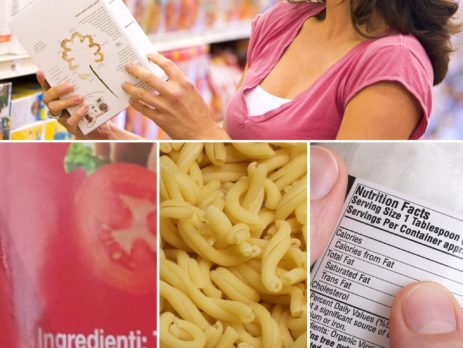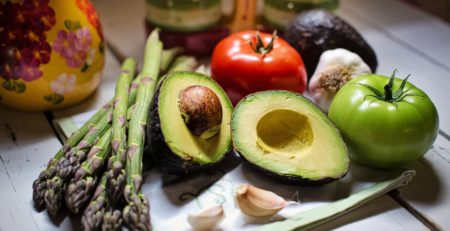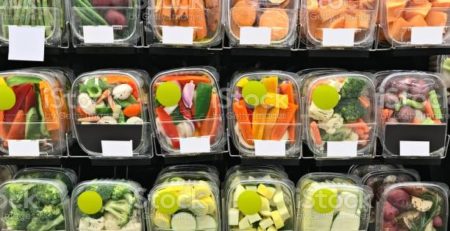Understanding the rules of food labeling
To obtain a high level of consumer health protection and ensure their right to information, the European Parliament and the Council of the European Union have issued Regulation (EU) n. 2011/1169 concerning the supply of food information to consumers.
Regulation (EU) n. 1169 /11 imposes clear, understandable and legible labeling for the consumer; the information must be visually accessible to the public for this the regulation contains indications about:
- the font size
- the spacing between letters and lines
- the thickness
- color
- the proportion between width and height of the letters
- the surface of the material as well as the significant contrast between writing and background.
The regulation also requires the manufacturers to insert a series of information on the label; some mandatory and others optional. The obligation to include mandatory food information on the label is intended to guide consumers to make adequate use of a food and to make informed choices suited to individual dietary needs.
For this reason, mandatory information includes an indication of allergens, substances that can cause adverse reactions in subjects suffering from food allergies and / or food intolerances.
Mandatory information on the label
With a few exceptions, food producers are obliged to communicate to consumers through labeling the following information:
- the name of the food (the name commonly used to indicate that food with an indication of its physical state, such as Semi-skimmed milk, cocoa powder, dehydrated fruit, etc.)
- the list of ingredients (the ingredients are listed in descending order: from the ingredient present in greater quantity, up to the ingredient present in less quantity)
- any ingredient or technological adjuvant defined allergened and listed in Annex II of EU Reg. No. 1169/11 or derived from a substance or product listed in said annex which causes food allergies or intolerances in subjects suffering from food allergies and / or food intolerances
- the net quantity of some ingredients (if “hazelnut cream spread” is indicated on the label, the percentage of hazelnut contained in the product must be indicated – 10% hazelnut example- otherwise the wording could be misleading for the consumer)
- the net quantity of the food
- the minimum storage term or expiry date
- special storage conditions and / or conditions of use
- the name or business name and address of the OAS
- the country of origin or place of provenance where applicable
- the instructions for use, in cases where their omission could make it difficult to use the food properly (eg “to be consumed after cooking”)
- the actual alcoholic strength by volume for beverages containing more than 1.2% alcohol by volume
- a nutrition declaration
Presence of allergens
The presence of allergens must be compulsorily indicated in labels because it represents a source of danger for all subjects suffering from food allergies and / or intolerances. For this they must be highlighted with a special character: in bold, highlighted, underlined. Below is the list of allergens in Annex II of Reg. (EU) n.1169 / 2011:
- CEREALS containing gluten such as wheat, rye, barley oats, spelled, kamut and their derived strains and derived products;
- CRUSTACEANS and shellfish products;
- EGG and egg-based products;
- FISH and fish products;
- PEANUTS and peanut based products
- SOY and soy-based products
- MILK and milk-based products (including lactose)
- NUTS FRUIT such as almonds, hazelnuts, walnuts, pistachios and their products
- CELERY and celery based products
- MUSTARD and mustard-based products
- SESAME SEEDS and products based on sesame seeds
- SULFUR DIOXIDE AND SULPHITES in concentrations higher than 10 mg / kg or 10 mg / liter in terms of total sulfur dioxide
- LUPINS and products based on lupins
- SHELLFISH and shellfish products
Omission of the list of ingredients
The consumer may not find an indication of the ingredients list in the following cases:
- fresh fruit and vegetables, including potatoes, which have not been peeled or cut or that have not undergone similar treatments;
- the gasified water from the description of which this characteristic appears;
- fermentation vinegars coming exclusively from a single basic product, as long as no other ingredients have been added (this indication does not therefore refer to balsamic vinegar which also contains syrups or sugar)
- cheeses, butter, milk and fermented creams, provided that no ingredients other than milk-derived products have been added, food enzymes and cultures of micro-organisms necessary for manufacture or ingredients other than salt necessary for manufacture.
- foods that include only one ingredient, provided that the name of the food is identical to the name of the ingredient (for example “Milk” => milk is included in the allergenic substances of Annex II of Reg. (EU) n.1169 / 2011, but the name of the product clearly identifies its presence inside the product) or allows to clearly determine the nature of the ingredient.
Difference between minimum storage term and expiry date
TMC or Minimum Conservation Deadline
The minimum shelf life of a food or TMC is the date up to which this product retains its specific properties in proper storage conditions. The indication that characterizes the TMC is “to be consumed preferably within” or “best before” + data. TMC is applied to non-perishable foodstuffs with long shelf life: UHT sterilized milk, pasta, rice, flour, etc. In this case, the date does not represent a mandatory limit beyond which the food can no longer be consumed because it is dangerous for human health. However, producers are obliged to include it in the mandatory information on the label and cannot sell the product beyond its TMC.
The TMC consists of the indication in a clear and visible way and shows: day, month and year and can be expressed according to the methods highlighted below:
| CONSERVABLE FOOD PRODUCT FOR… | MODALITÀ DI INDICAZIONE | ESEMPIO DI DICITURA |
| … less than three month | indication of day and month | “Best before end……” |
| … over three months but for less than eighteen months | indication of day and month | “Best before end….” |
| … for over eighteen months | indication of the year | “Best before end…” |
The TMC is replaced by the due date in the case of highly perishable pre-packaged food products from a microbiological point of view which could be an immediate health hazard after a short period.
The expiry date of the foods
The expiry date instead is the date up to which a food is considered hygienically safe for human health. This indication is clearly valid only if the storage conditions are kept unchanged. In conditions of stress (for example temperatures higher than those of proper storage of the product) degradation phenomena can occur prematurely, consequently the indication on the expiry date is no longer valid. If, for example, we leave a bottle of fresh pasteurized milk at temperatures> 10 ° C, its expiration will be much shorter than expected by the manufacturer. The expiry date is reported with the words “to be consumed within see X” or the place where the date is stamped. The date must include, in order, the day, the month and possibly the year. The conditions for the correct conservation of the product must also be indicated on the package.
Once the expiration date has passed, the food can be a danger to human health due to the possible bacterial proliferation of alterative and pathogenic microorganisms. In fact, the sale of products that have exceeded the expiry date is prohibited by law.











